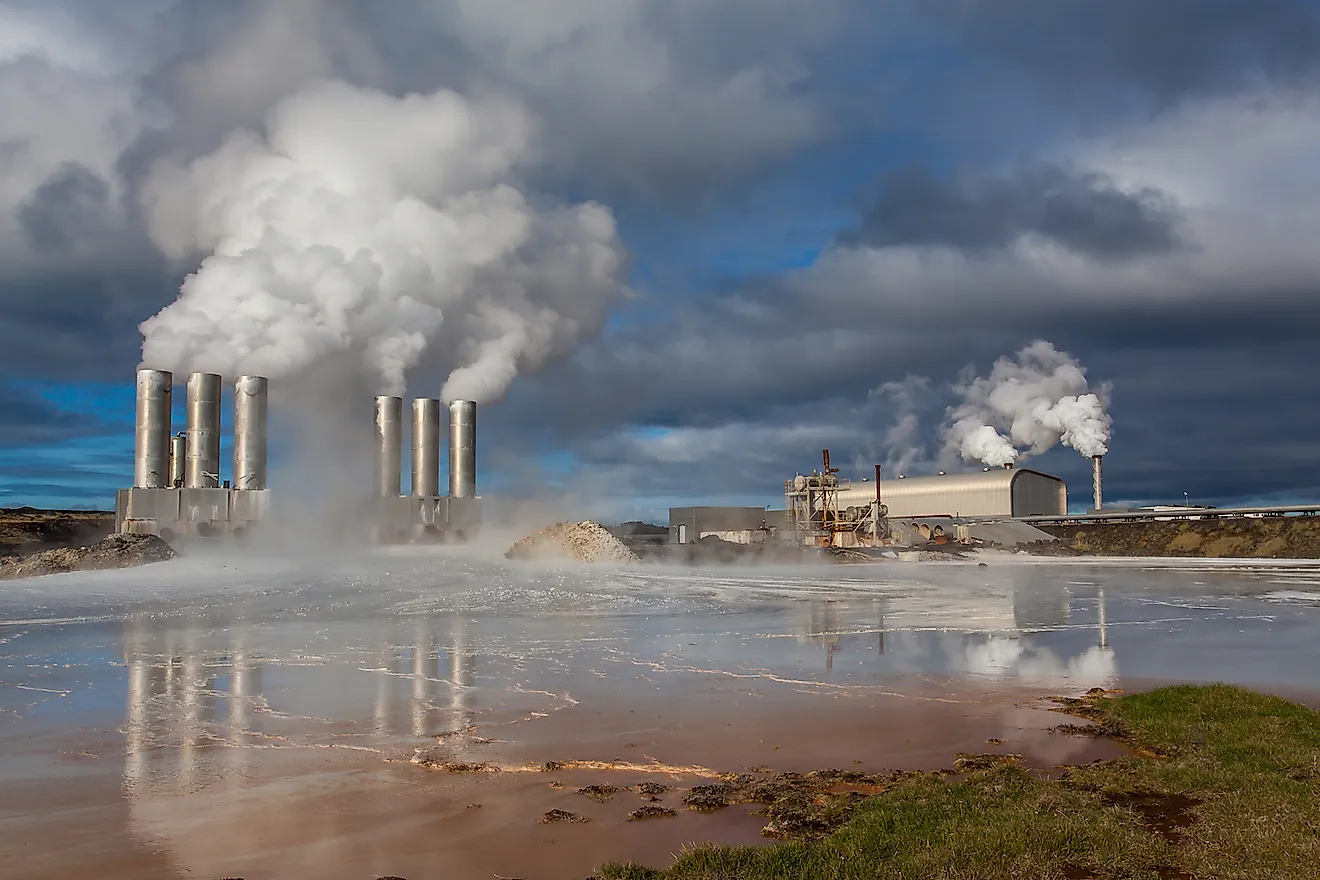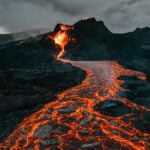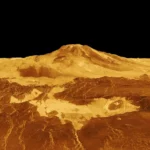Picture this: the Earth’s core is like a giant furnace, releasing hot water and steam underground. Now, what if we could tap into that energy and use it to power our homes and businesses? That’s where geothermal energy comes in! In this article, we’ll dive into the world of volcanoes and explore how they’re packed with this amazing energy source just waiting to be unleashed.
Geothermal Energy from Volcanoes: Unlocking the Earth’s Fiery Power
Imagine drilling into the Earth’s belly, unlocking a vast reservoir of heat beneath our feet. That’s the essence of geothermal energy, and when it comes from volcanoes, it’s a powerhouse waiting to be tapped.
Volcanoes are like nature’s furnaces, with magma bubbling and boiling deep within. This intense heat turns nearby water into steam, creating a natural geothermal power plant just waiting to be harnessed.
How It Works
Picture a giant pot of boiling water below the surface, with steam rising towards the top. As the steam nears the surface, the pressure drops, causing it to expand into a frantic dance. This expansion drives turbines connected to generators, which spin to generate electricity.
Benefits of Volcanic Geothermal Energy
This energy source is a game-changer:
- Clean and Green: It produces zero greenhouse gases, making it a champion of climate action.
- Reliable: Unlike solar or wind, geothermal energy doesn’t depend on the weather, giving us a consistent power supply, rain or shine.
- Abundant: Geothermal resources are bountiful around the globe, ensuring a sustainable energy future.
Tapping into Volcanic Energy
To capture this volcanic gold, we follow a few steps:
- Spot the Hot Spots: We look for areas with active volcanoes or geysers, indicating the presence of geothermal heat.
- Drilling Down: We drill deep into the Earth’s crust to reach the scorching-hot water reservoirs.
- Pumping the Heat: The hot water is pumped to the surface, ready to get its steam on.
- Turbine Time: The steam powers turbines that spin generators, creating electricity.
- Return to Sender: The cooled water is injected back into the reservoir, keeping the pressure up.
Conclusion
Volcanic geothermal energy is a beacon of sustainability. It’s clean, reliable, and plentiful, promising a brighter, greener future. Let’s embrace this Earth-given gift and power our homes and businesses with the fiery heart of volcanoes.
Explore the famous volcanoes that have shaped our planet’s history, from towering Mount Everest to the active Kilauea in Hawaii. Learn about Types of volcanoes, their diverse formations and eruption characteristics. Discover the potential volcanic hazards and risks associated with these geological wonders and the measures taken to mitigate them. Delve into famous volcanic eruptions in history that have left an indelible mark on civilization and the environment. Examine the complex relationship between volcanoes and climate change, uncovering their role in shaping our planet’s atmosphere and ecosystems. Embark on a virtual expedition to volcano tourism and safety, uncovering the awe-inspiring beauty and inherent dangers that attract visitors to these active landscapes. Explore the formation and characteristics of volcanic islands and archipelagos, volcanic landforms that have risen from the depths of the ocean. Discover the unique volcanic rocks and minerals that form during volcanic eruptions, and their applications in various industries. Venture beyond our planet to uncover the existence of volcanoes on other planets, offering insights into the geological diversity of our solar system. Finally, delve into the intricacies of volcano monitoring and prediction techniques, exploring the scientific methods used to study and forecast volcanic activity.
How can we harness geothermal energy from dormant volcanoes?
Imagine tapping into the fiery heart of dormant volcanoes to power our homes, businesses, and industries with clean energy. That’s the potential of harnessing geothermal energy from these slumbering giants. Let’s dive deeper into this exciting possibility.
Unveiling Geothermal Energy’s Treasures
Harnessing geothermal energy involves extracting heat from the underground reservoirs linked to dormant volcanoes. This heat, forged by the Earth’s molten core, provides a reliable and sustainable source of energy.
Key Benefits: A Powerhouse of Clean Energy
Geothermal energy from dormant volcanoes offers a myriad of advantages:
- 24/7 Reliability: Unlike solar or wind energy, geothermal energy is available around the clock.
- Environmental Champion: It’s emissions-free, making it a clean choice that helps protect our planet.
- Abundance and Cost-Effectiveness: Geothermal resources are plentiful and often cheaper than other renewable energy sources.
Challenges: Exploring and Unlocking the Source
While promising, harnessing geothermal energy from dormant volcanoes comes with its challenges:
- Explorers on a Mission: Identifying and evaluating geothermal resources requires thorough exploration and study.
- Drilling Deep: Drilling into dormant volcanoes is complex and requires specialized equipment.
- Environmental Sensitivity: Geothermal development must be carefully planned to minimize its impact on the surrounding environment.
Steps to Harness Geothermal Energy:
- Scout the Terrain: Conduct thorough exploration to pinpoint potential geothermal sites.
- Drill It Down: Dig deep boreholes into the promising locations.
- Extract the Heat: Install heat exchangers to capture the geothermal energy from the hot fluids.
- Power Up: Convert the extracted heat into electricity or use it directly for heating.
The Future of Geothermal Energy: A Brighter Horizon
Research and development are paving the way for advancements in geothermal technology. As we overcome the challenges, dormant volcanoes will likely become a significant player in our future energy landscape, providing clean power for generations to come.
How does geothermal energy impact the environment and what are its benefits?
Geothermal energy is a renewable source that uses heat from the Earth’s core to generate electricity or hot water. It’s a clean and sustainable alternative to fossil fuels that can help us reduce our carbon footprint.
Environmental Impact
Geothermal energy is a low-carbon source of energy. When compared to fossil fuels, it produces much fewer greenhouse gases. This is because geothermal energy doesn’t burn any fuel, so it doesn’t release any carbon dioxide or other harmful pollutants into the air.
Geothermal energy also doesn’t require large amounts of land, which means it has a smaller impact on wildlife and ecosystems.
Benefits
Geothermal energy has a number of benefits, including:
- Clean and renewable: Geothermal energy is a clean and renewable source of energy. It doesn’t produce any harmful emissions, and it doesn’t rely on non-renewable resources like fossil fuels.
- Reliable: Geothermal energy is a reliable source of energy. It’s not affected by weather conditions, so it can always be counted on to provide power.
- Sustainable: Geothermal energy is a sustainable source of energy. It doesn’t damage the environment, and it can be used to generate electricity for generations to come.
Key Advantages of Geothermal Energy
| Advantage | Description |
|---|---|
| Clean and renewable | Geothermal energy doesn’t produce any harmful emissions, and it doesn’t rely on non-renewable resources like fossil fuels. |
| Reliable | Geothermal energy is a reliable source of energy. It’s not affected by weather conditions, so it can always be counted on to provide power. |
| Sustainable | Geothermal energy is a sustainable source of energy. It doesn’t damage the environment, and it can be used to generate electricity for generations to come. |
Overall, geothermal energy is a clean, renewable, and sustainable source of energy that can help us reduce our carbon footprint and protect the environment.
How can geothermal energy harness precious metals?
Imagine volcanoes not just as majestic natural wonders, but also as untapped treasure chests of precious metals. Geothermal energy, the heat from the Earth’s core, can be harnessed to unlock these precious minerals like gold, silver, and copper. Here’s how it’s done:
Picture this: Inside a volcano, the Earth’s sizzling heat transforms water trapped underground into mighty steam. This steam is then captured and whisked away to drive turbines, generating clean electricity. But hold on, the story doesn’t end there. The water used to make the steam carries a secret: it’s brimming with dissolved minerals, including our coveted precious metals.
By capturing and sifting through this mineral-rich water, we can extract these precious resources without the mess and harm that come with traditional mining techniques. It’s like alchemy, but with science! Not only does this process save us money, but it also gives Mother Earth a break from the environmental toll of digging up solid ore.
Key Takeaways:
- Geothermal energy from volcanoes is a sustainable way to score precious metals.
- The process involves extracting metals from volcanic fluids, keeping waste and energy consumption at a minimum.
- Geothermal energy can be tapped alongside metal extraction, making it a double sustainability win.
Here’s a breakdown of how it works in steps:
- Capture the heat: Geothermal energy harnesses the heat from the Earth’s core to heat up water trapped underground.
- Create steam: This heated water transforms into mighty steam.
- Drive turbines: The steam is captured and used to spin turbines, generating clean electricity.
- Extract metals: The water used to create the steam contains dissolved minerals, including precious metals.
- Process the water: The mineral-rich water is processed to extract the precious metals.
Pros:
- Sustainable extraction of precious metals.
- Reduced waste and energy consumption compared to traditional mining.
- Environmentally friendly.
- Can be combined with electricity generation.
Cons:
- Requires suitable geological conditions (presence of volcanoes).
- Initial investment and exploration costs can be substantial.
- May require specialized technologies and expertise.
FAQ
Q1: How does geothermal energy from volcanoes work?
A1: Geothermal energy from volcanoes utilizes the heat and water present within the Earth’s interior to produce power. Hot water from volcanoes and geysers is forced toward the surface where, due to reduced pressure, it transforms into steam. This steam drives a turbine, generating energy.
Q2: Is geothermal energy from volcanoes a renewable resource?
A2: Yes, geothermal energy from volcanoes is a renewable energy source. It exploits the abundant heat and water naturally present within the Earth, which is constantly replenished over time.
Q3: What are the environmental benefits of geothermal energy from volcanoes?
A3: Geothermal energy from volcanoes is environmentally friendly as it does not emit greenhouse gasses. Unlike fossil fuels, geothermal energy harnesses the heat of the Earth without combustion, reducing greenhouse gas emissions. Additionally, geothermal power is a reliable source of renewable energy, contributing to sustainable development.
Q4: Is geothermal energy from volcanoes reliable?
A4: Yes, geothermal energy from volcanoes is a reliable source of energy. Unlike solar or wind energy, geothermal energy is not dependent on weather conditions and can operate continuously, providing a steady supply of electricity.
Q5: How is geothermal energy from volcanoes utilized worldwide?
A5: Geothermal energy from volcanoes has been utilized globally to power communities. California’s geothermal plants, for example, significantly contribute to the state’s renewable energy supply. Additionally, scientists are actively researching the potential of dormant volcanoes as geothermal energy sources, especially in areas with volcanic landscapes.
- Sept 31 Myth: Unveiling Calendar Secrets - March 18, 2025
- How Long & Till December 18, 2025: Accurate Countdown Guide - March 18, 2025
- Discover Japanese Artists: A Complete History - March 18, 2025

















Comments are closed.